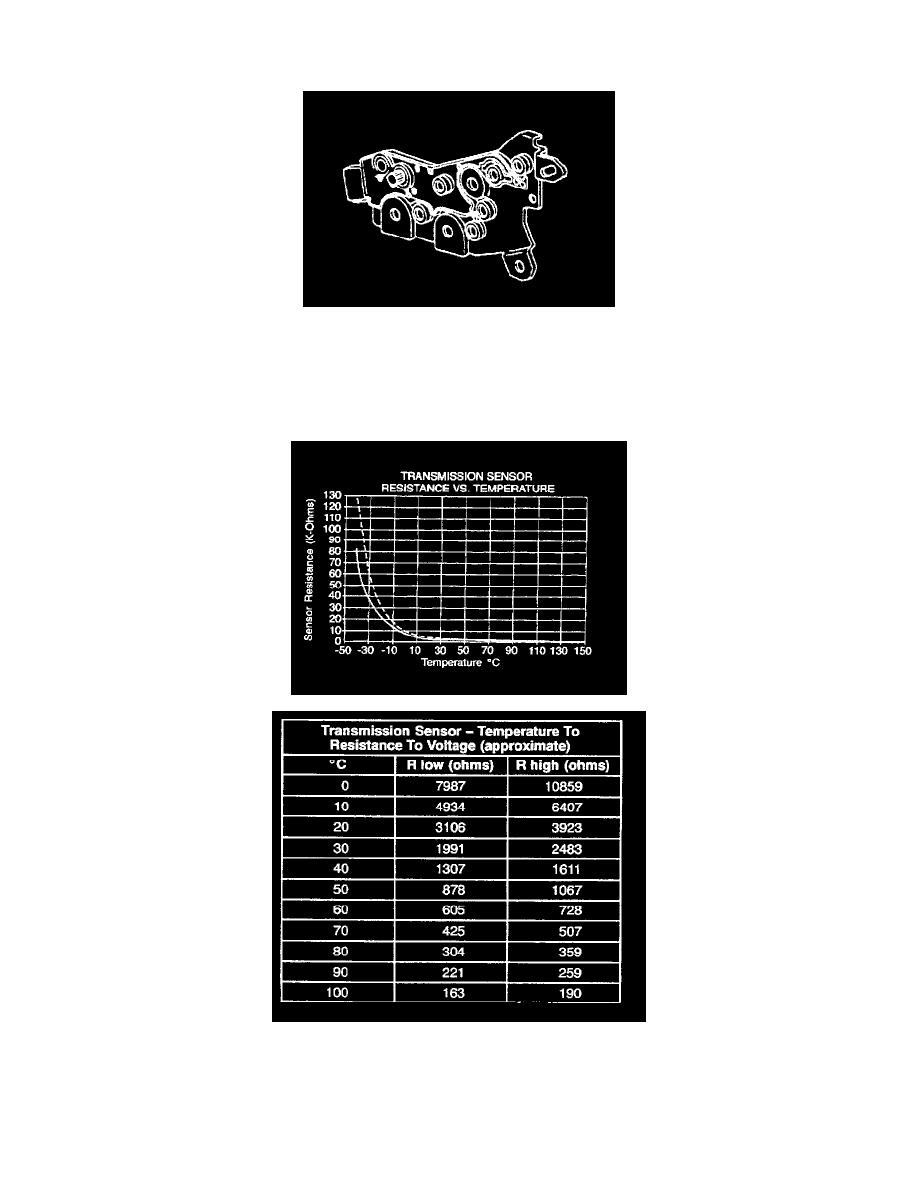Lanos S Hatchback L4-1.6L DOHC D-TEC MFI (1999)

Transmission Temperature Sensor/Switch: Description and Operation
TRANSMISSION FLUID TEMPERATURE (TFT) SENSOR
The Transmission Fluid Temperature (TFT) sensor is a negative temperature coefficient thermistor (temperature sensitive resistor) that provides
information to the Powertrain Control Module (PCM) regarding transmission fluid temperature. The temperature sensor is integrated in the Automatic
Transmission Fluid Pressure Manual Valve Position Switch (TFP val. position sw.) which is volted to the valve body. The sensor monitors
pressurized main line pressure from the inside of the valve body to determine the operating temperature of the transaxle fluid. The sensor, similar to
each of the TFP val. position sw., uses an O-ring seal to maintain fluid pressure in the valve body.
The internal electrical resistance of the sensor varies in relation to the operating temperature of the transmission fluid.
The PCM sends a 5 volt reference signal to the temperature sensor and measures the voltage drop in the electrical circuit. A lower fluid temperature
creates a higher resistance in the temperature sensor, thereby measuring a higher voltage signal.
The PCM measures this voltage as another input to help control line pressure, shift schedules and Torque Converter Clutch (TCC) apply. When
transaxle fluid temperature reaches 140°C (284°F) the PCM enters "hot mode." Above this temperature the PCM modifies transmission shift
schedules and TCC apply in an attempt to reduce fluid temperature by reducing transmission heat generation. During hot mode the PCM applies the
TCC at all times in third and fourth gears. Also, the PCM performs the 2-3 and 3-4 shifts earlier to help reduce fluid heat generation. Hot mode may
